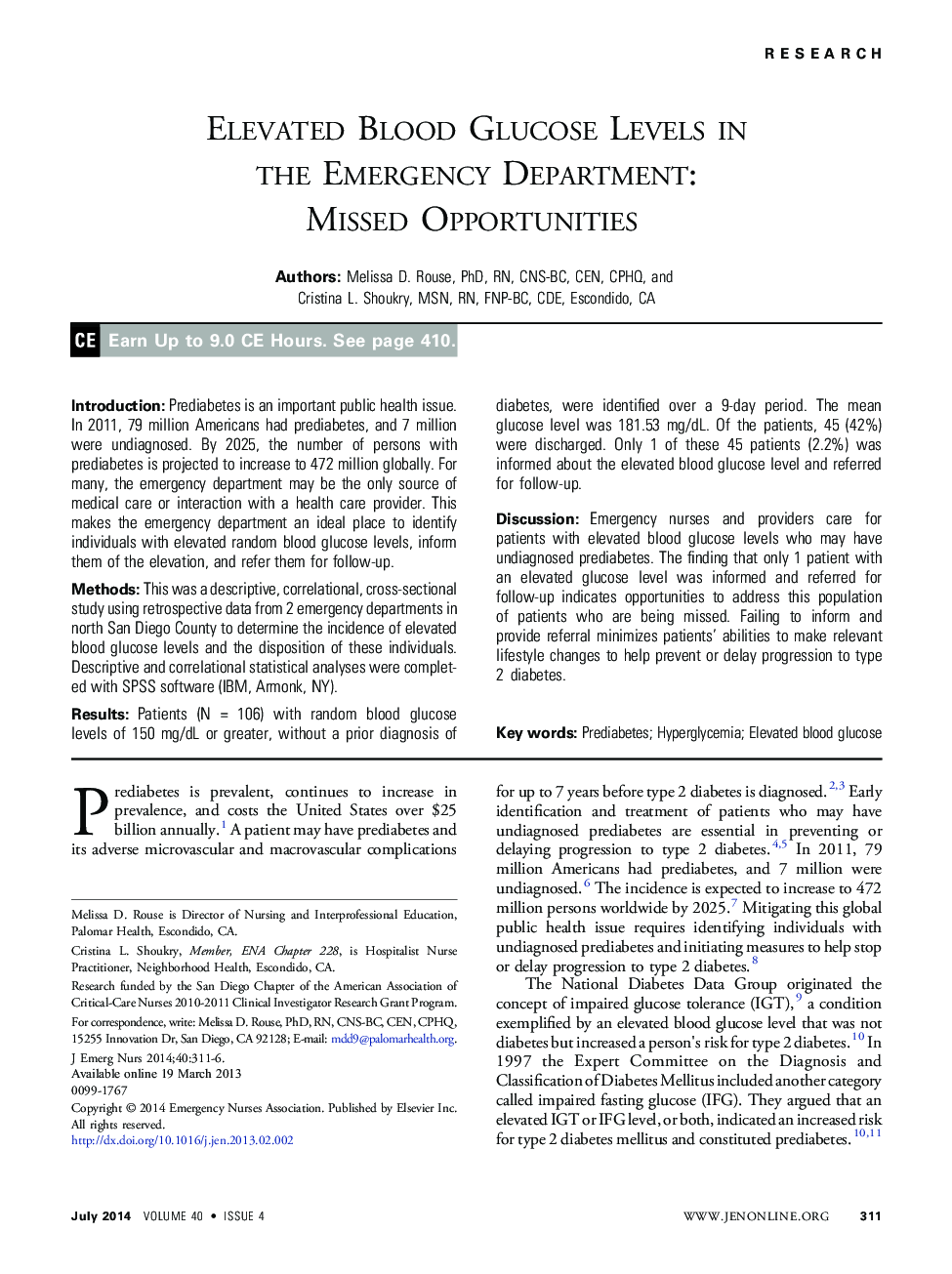| Article ID | Journal | Published Year | Pages | File Type |
|---|---|---|---|---|
| 2609938 | Journal of Emergency Nursing | 2014 | 6 Pages |
IntroductionPrediabetes is an important public health issue. In 2011, 79 million Americans had prediabetes, and 7 million were undiagnosed. By 2025, the number of persons with prediabetes is projected to increase to 472 million globally. For many, the emergency department may be the only source of medical care or interaction with a health care provider. This makes the emergency department an ideal place to identify individuals with elevated random blood glucose levels, inform them of the elevation, and refer them for follow-up.MethodsThis was a descriptive, correlational, cross-sectional study using retrospective data from 2 emergency departments in north San Diego County to determine the incidence of elevated blood glucose levels and the disposition of these individuals. Descriptive and correlational statistical analyses were completed with SPSS software (IBM, Armonk, NY).ResultsPatients (N = 106) with random blood glucose levels of 150 mg/dL or greater, without a prior diagnosis of diabetes, were identified over a 9-day period. The mean glucose level was 181.53 mg/dL. Of the patients, 45 (42%) were discharged. Only 1 of these 45 patients (2.2%) was informed about the elevated blood glucose level and referred for follow-up.DiscussionEmergency nurses and providers care for patients with elevated blood glucose levels who may have undiagnosed prediabetes. The finding that only 1 patient with an elevated glucose level was informed and referred for follow-up indicates opportunities to address this population of patients who are being missed. Failing to inform and provide referral minimizes patients’ abilities to make relevant lifestyle changes to help prevent or delay progression to type 2 diabetes.
